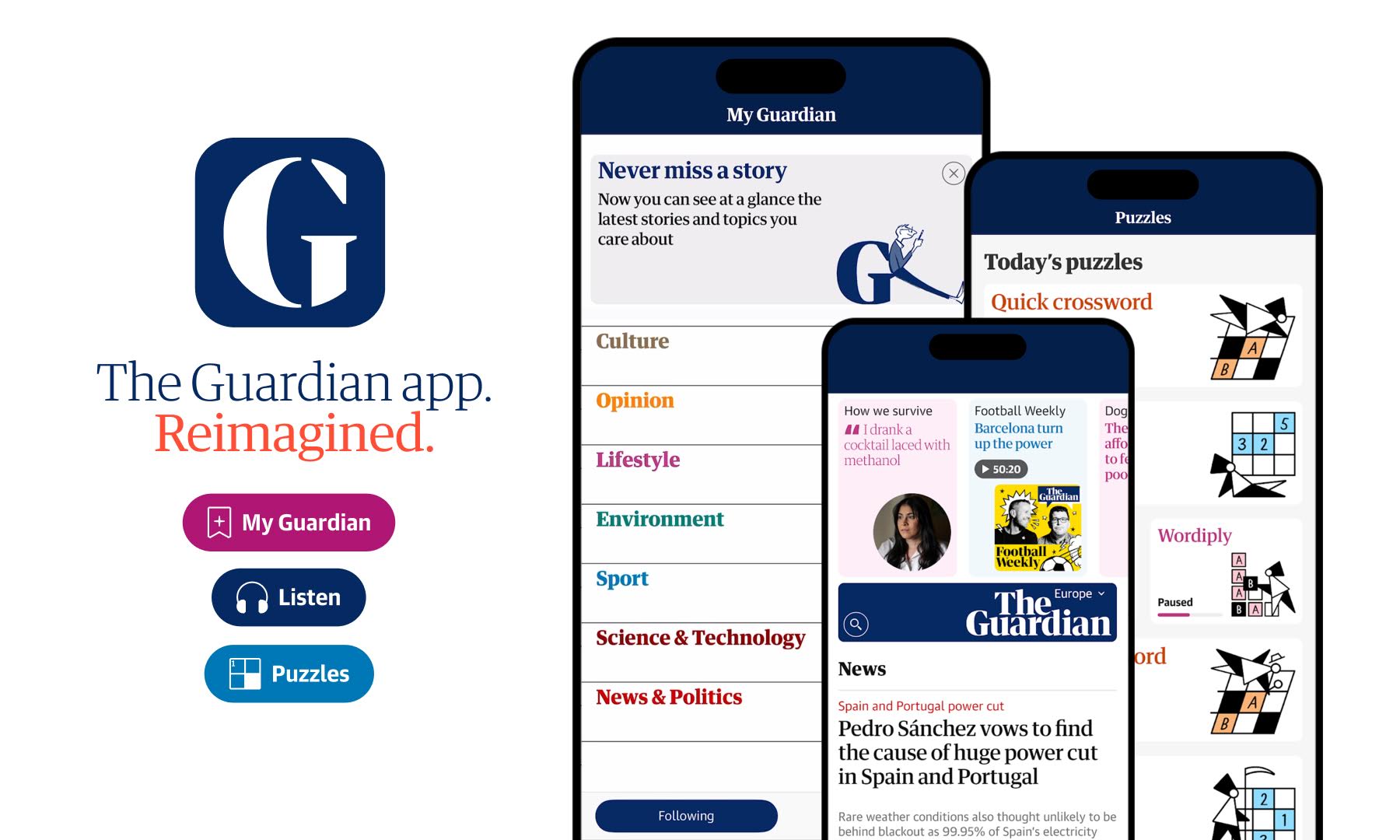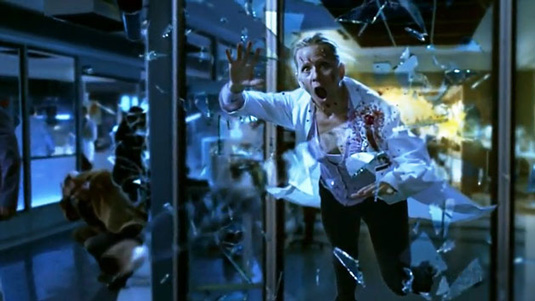
Win a trip to Los Angeles!
This feature is brought to you in association with Masters of CG, a new competition that offers the chance to work with one of 2000AD's most iconic characters and win an all expenses paid trip to the SIGGRAPH conference. Find out more at the end of this article...
If you're over 30, you'll remember a time when TV special effects were the poor relations of their cinema cousins. If you wanted to see spectacle, you went to see Star Wars. Shows like Buck Rogers and Space 1999, by comparison, looked cheap and clunky.
In the last decade, that's all changed, with 'boxset TV' becoming the new cinema. And Zoic Studios has been at the heart of this astonishing new wave of shows, creating the modern look and feel of everything from Firefly and Battlestar Galactica to True Blood and Fringe.
But revolutions don't come from nowhere, and it's been a long and often tricky road for co-founder Andrew Orloff.
Pioneer spirit
He graduated from film school in 1992 with a strong interest in computer graphics that went back to junior high, when he'd experimented with early 3D software on the Apple II. But there was one problem.
"At that time there was no training for CGI," explains. "Even the popular animation school in LA, Gnomon, hadn't even started yet. So I needed to find a place where I could get some experience, which was tough."
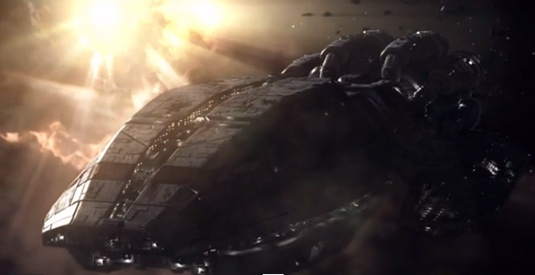
He eventually landed a job at a graphic design firm that did CD-ROM games, at the height of that format's popularity. "The company had one CGI equipped computer that no one really knew how to use," he recalls. "And so I'd go through the manual at night and teach myself to use it."
The extra hours paid off. "I got my first job in television as a result, then freelanced for a bit, until I ended up becoming one of the first instructors in computer graphics at Gnomon."
It was a pioneering era for the profession, he recalls. "At that time we did everything. We did our own camera tracking, we did our own modelling, texturing, character animation, rigging. There was no specialisation because the people who knew how to use the tools were few and far between. So I came up that way, learning pretty much every piece of the puzzle on these very expensive machines."
Hired gun
In the late 90s and early 2000s, as cheaper hardware arrived, Orloff bought his own and rented himself out as a 'hired gun' on commercials and TV shows. "I worked on the first season of South Park, helping them develop their CGI pipeline, did a bunch of commercials such as the Taco Bell dog, worked on TV shows like Power Rangers - basically anything that needed CG."
He was constantly in demand, and for good reason. At the time there were few machines that could actually create computer graphics, and even fewer people who knew how to use them.
"The software manufacturers actually held a list of 'approved operators', he explains. "And they passed that list around, because there was no market for artists at all."
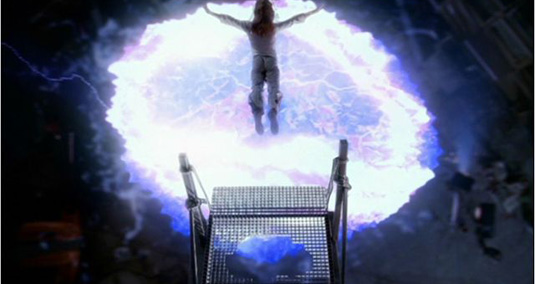
He soon started getting supervisor gigs, including music videos for Linkin Park. "And in the process I hooked up with the four other co-founders of Zoic. We all worked together at Radium, on early seasons of Buffy the Vampire Slayer, Angel and Smallville. And then we broke off and started Zoic in 2002."
Faster and better
It was a heady time for the industry. "With shows like Buffy, we were using the television medium in a way that hadn't been done before," Orloff enthuses. "For the first time, we were able to use a lot of computer graphics.
"Television visual effects at that time had been pretty much relegated to Star Trek and were pretty much model and motion control-based. There hadn't been a lot of CG because the machines were so expensive and the turnaround time and the rendering at that time was really slow. But now we were figuring out ways to do it faster and as good.
"On Buffy, for example, had a bunch of what we called stock effects. So things like the 'vampire dustings' [the dramatic way that the undead disintegrate after being staked by Buffy] were the same every week. We knew how many we were going to do and we had a fixed price, so we were able to make it work economically.
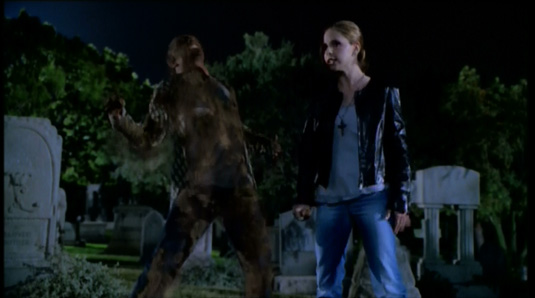
"But it also meant we had the time, show after show, season after season, to upgrade the effects," he adds.
So the vampire dustings in season one, for instance, consisted of simply dissolving the actor off and then dissolving on a series of particle explosions. Then in season three, compositor Chris Jones introduced the idea of showing a flash of the vampire's skeleton between the body and disintegration. Later on, Zoic started incorporating motion capture into the process. Constant improvements to the effects like this helped keep the show feeling fresh throughout seven seasons.
Sci-fi gold
But while Buffy was groundbreaking, it was with two mid-2000s sci-fi shows that Zoic felt they'd truly arrived, says Orloff.
"When we were working on Firefly and Battlestar Galactica, that was when we all saw the potential of feature-quality visual effects on television," he explains.
"It really started to come to life and we thought: 'Wow, we really can do something that's really as good and as exciting as what you see in a movie theatre, but on a week to week basis.'"
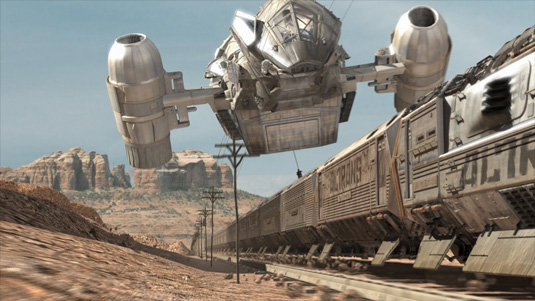
Firefly, a 'sci-fi Western' starring Nathan Fillion, only ever found a niche (though devoted) audience and was cancelled after one series and a follow-up movie. Battlestar Galactica was a bigger hit, running for four seasons and winning numerous awards. But both attracted huge critical acclaim and put real flesh on the bones of the idea that 'TV is the new cinema'.
"Those two shows were the watershed for everybody at Zoic," Orloff emphasises. "They showed that you don't need a multi-million dollar film studio bankrolling you to make it into a great creative piece. That set the tone early for us at Zoic and created an attitude and a culture that sticks with us to this day."
Loving the alien
That culture is about constantly pushing the boundaries, says Orloff. "The tagline of our company is 'visual evolution'," he explains. "So we've built our market on creating a signature visual effects style for our clients - being a real creative partner." So for instance, when Steven Spielberg wanted a certain look and feel for his 2011 alien invasion series, Falling Skies, he came straight to Zoic.
"Spielberg very specifically had a desire to have real performance in shots of the alien creatures," Orloff explains. "So we couldn't make them all-CG. We had to combine physical prosthetic suits with computer graphics in a way that appeared seamless."
They did a great job - try watching a battle involving the multi-legged aliens known as 'the Skitters', and work out which bit is prosthetic and which is CG.
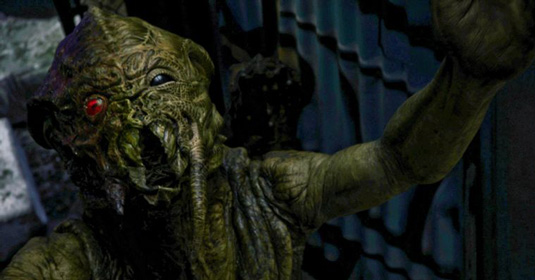
Zoic reveals how the split works. "Everything on the Skitter - the creature - from the belly down is computer generated. And we're also augmenting the face because the animatronics on the face are not as sophisticated."
But there are further complications. "There's only two prosthetic suits," Orloff adds. "Plus, these Skitters have to climb up walls, go upside down, run and jump, and attack people - all at great speed.
"So there is an all-CG version of the creature that we often use interchangeably. Sometimes we'll cut to a close up of the prosthetic creature and switch to a CG version, sometimes it's a split - part CG, part regular. And that goes for a lot of the creatures on the show."
Mind's eye
This constant challenge to make a scene look believable is what Zoic is all about, Orloff says. "So for instance, you need to go into the mind of a criminal investigator for CSI and recreate this scene, in their mind's eye - how do you create that visual style? Or you're trying to create a space opera like Battlestar Galactica and you need that visceral World War Two feel; how are you going to convey that to your audience through visual effects?
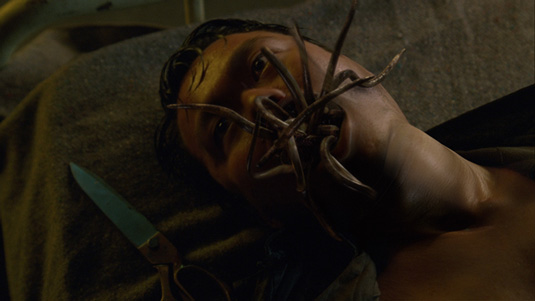
"There's a whole world here of aliens and fairytale creatures that we need our audience to believe in and invest in, in the context of the show, and feel connected to."
By pulling it off, time after time, Zoic has forged a stellar reputation for television effects. And Orloff has supervised VFX on some of the most inventive and imaginative series of recent years, including dimension-crossing sci-fi Fringe, sexy vampire series True Blood and the reboot of 80s alien invasion drama V.
While the shows differ hugely, one thing remains constant: collaboration is at the heart of the process, says Orloff. "You form relationships - personal relationships really - with the executives and the other heads of department. That's the key."
Crazy conversations
Take 'Once Upon a Time', the hit show reinventing classic fairy tales for a modern audience, and its spinoff, Once Upon a Time in Wonderland. Zoic has created environments for both, as well as digital characters such as The White Rabbit voiced by John Lithgow.
"In doing so, we work very closely with Michael Joy, the brilliant production designer," Orloff explains. "We have the craziest conversations - about ghosts and fairies, and wildebeasts and dragons, and lions with their manes on fire and ogres. Every week it's some crazy thing."
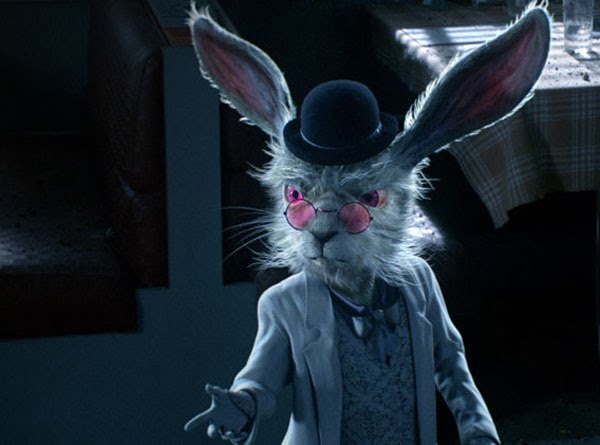
And it's this constant flow of creative debate and discussion that means making TV trumps movie-making every time in Orloff's mind.
"Early on, I saw the guys who went into movies were getting involved in more technical pieces of the puzzle," he explains. "They were working on the same problem and implementing the solution for that problem for an entire year. But I prefer the pace of TV.
"I'm a puzzle addict and a problem solver by nature. And the idea that I have a new challenge presented to me constantly is extremely fulfilling."
Win a trip to Los Angeles!
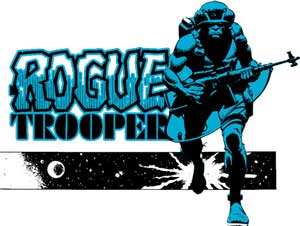
Masters of CG is a competition for EU residents that offers the one-in-a-lifetime chance to work with one of 2000AD's most iconic characters: Rogue Trooper.
We invite you to form a team (of up to four participants) and tackle as many of our four categories as you wish - Title Sequence, Main Shots, Film Poster or Idents. For full details of how to enter and to get your Competition Information Pack, head to the Masters of CG website now.
Enter the competition today!

Thank you for reading 5 articles this month* Join now for unlimited access
Enjoy your first month for just £1 / $1 / €1
*Read 5 free articles per month without a subscription

Join now for unlimited access
Try first month for just £1 / $1 / €1
Get the Creative Bloq Newsletter
Daily design news, reviews, how-tos and more, as picked by the editors.

Tom May is an award-winning journalist and editor specialising in design, photography and technology. Author of the Amazon #1 bestseller Great TED Talks: Creativity, published by Pavilion Books, Tom was previously editor of Professional Photography magazine, associate editor at Creative Bloq, and deputy editor at net magazine. Today, he is a regular contributor to Creative Bloq and its sister sites Digital Camera World, T3.com and Tech Radar. He also writes for Creative Boom and works on content marketing projects.
